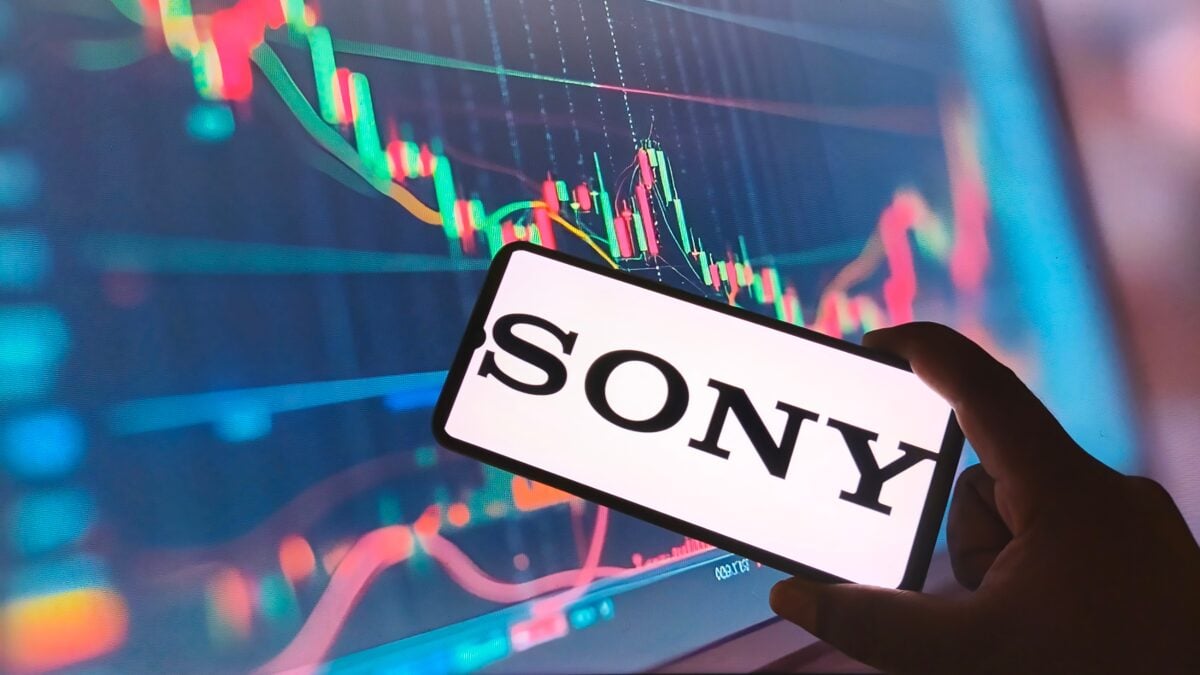TLDRs;
Contents
- Sony lifts full-year profit forecast to $9B after lowering expected U.S. tariff hit by $203M.
- April–June operating profit jumps 36.5% to $2.3B, easily beating analyst estimates.
- PS5 sales climb over 4% to 2.5M units in Q1, defying wider gaming industry slowdown.
- Company to spin off financial unit stake with Tokyo listing planned for September 29.
Sony Group Corporation (SONY) shares climbed 4.45% to close at ¥26.03 on Wednesday after the company boosted its full-year operating profit forecast by 4% to 1.3 trillion yen (US$9 billion).
The upward revision comes as the Japanese electronics and entertainment giant now expects a reduced impact from U.S. trade tariffs.
The anticipated tariff hit has been lowered to 70 billion yen (US$474.5 million) from the 100 billion yen (US$678 million) estimated in May 2025, providing a welcome cushion for investors concerned about global trade tensions. Sony cautioned, however, that tariff risks remain and the forecast could change if trade relations shift.

Strong Quarterly Earnings Beat Estimates
For the April to June 2025 quarter, Sony posted a 36.5% year-on-year surge in operating profit to 340 billion yen (US$2.3 billion), handily surpassing analyst predictions.
The boost came from strong performance in gaming, music, and entertainment, underscoring the strength of Sony’s diversified business model. PlayStation 5 sales rose 4% year-over-year to 2.5 million units, defying a broader slowdown in the global gaming industry.
Gaming Division Outperforms in Tough Market
Sony’s steady console sales growth stands out in a gaming sector grappling with layoffs, project delays, and slowing growth.
Industry-wide, analysts expect only 1% growth in 2025 after two years of decline, with major delays such as Grand Theft Auto VI projected to cost the industry $2.7 billion in lost revenue.
Sony’s resilience comes from a diversified entertainment portfolio spanning games, movies, and music, allowing it to weather downturns better than companies reliant solely on gaming.
Strategic Moves in Financial Services
Alongside its earnings update, Sony confirmed plans to reduce its stake in its financial unit to below 20% via a partial spin-off.
The financial arm will be listed on the Tokyo Stock Exchange on September 29, freeing up capital for growth investments in core entertainment and technology businesses.
Sony’s ability to adapt to market changes has been a recurring theme in its nearly 80-year history. From pioneering Japan’s first transistor radio in 1955 to revolutionizing music with the Walkman in 1979 and launching the PlayStation in 1994, the company has repeatedly pivoted to stay relevant and profitable, traits that may prove critical amid ongoing trade uncertainty.


